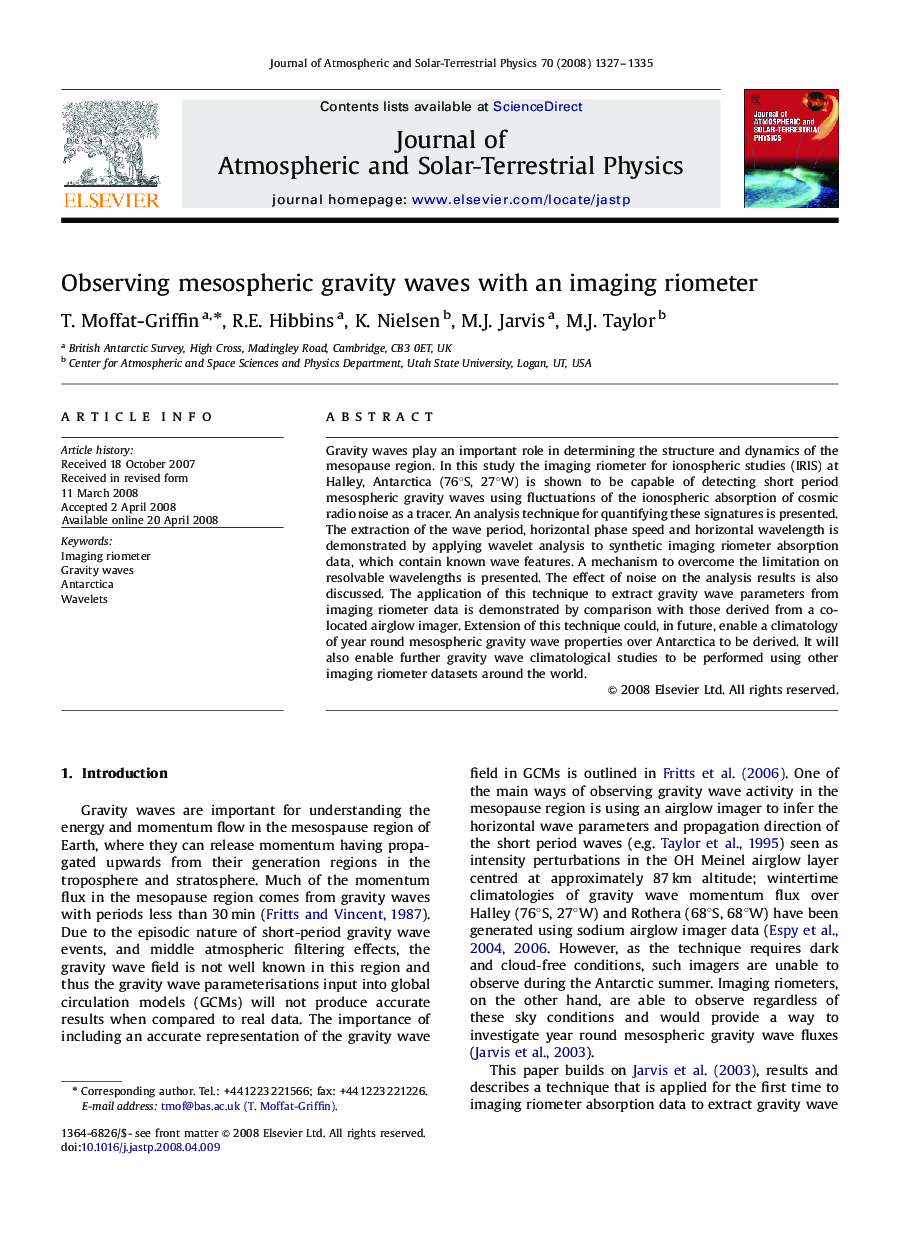| Article ID | Journal | Published Year | Pages | File Type |
|---|---|---|---|---|
| 1777866 | Journal of Atmospheric and Solar-Terrestrial Physics | 2008 | 9 Pages |
Gravity waves play an important role in determining the structure and dynamics of the mesopause region. In this study the imaging riometer for ionospheric studies (IRIS) at Halley, Antarctica (76∘S76∘S, 27∘W27∘W) is shown to be capable of detecting short period mesospheric gravity waves using fluctuations of the ionospheric absorption of cosmic radio noise as a tracer. An analysis technique for quantifying these signatures is presented. The extraction of the wave period, horizontal phase speed and horizontal wavelength is demonstrated by applying wavelet analysis to synthetic imaging riometer absorption data, which contain known wave features. A mechanism to overcome the limitation on resolvable wavelengths is presented. The effect of noise on the analysis results is also discussed. The application of this technique to extract gravity wave parameters from imaging riometer data is demonstrated by comparison with those derived from a co-located airglow imager. Extension of this technique could, in future, enable a climatology of year round mesospheric gravity wave properties over Antarctica to be derived. It will also enable further gravity wave climatological studies to be performed using other imaging riometer datasets around the world.
